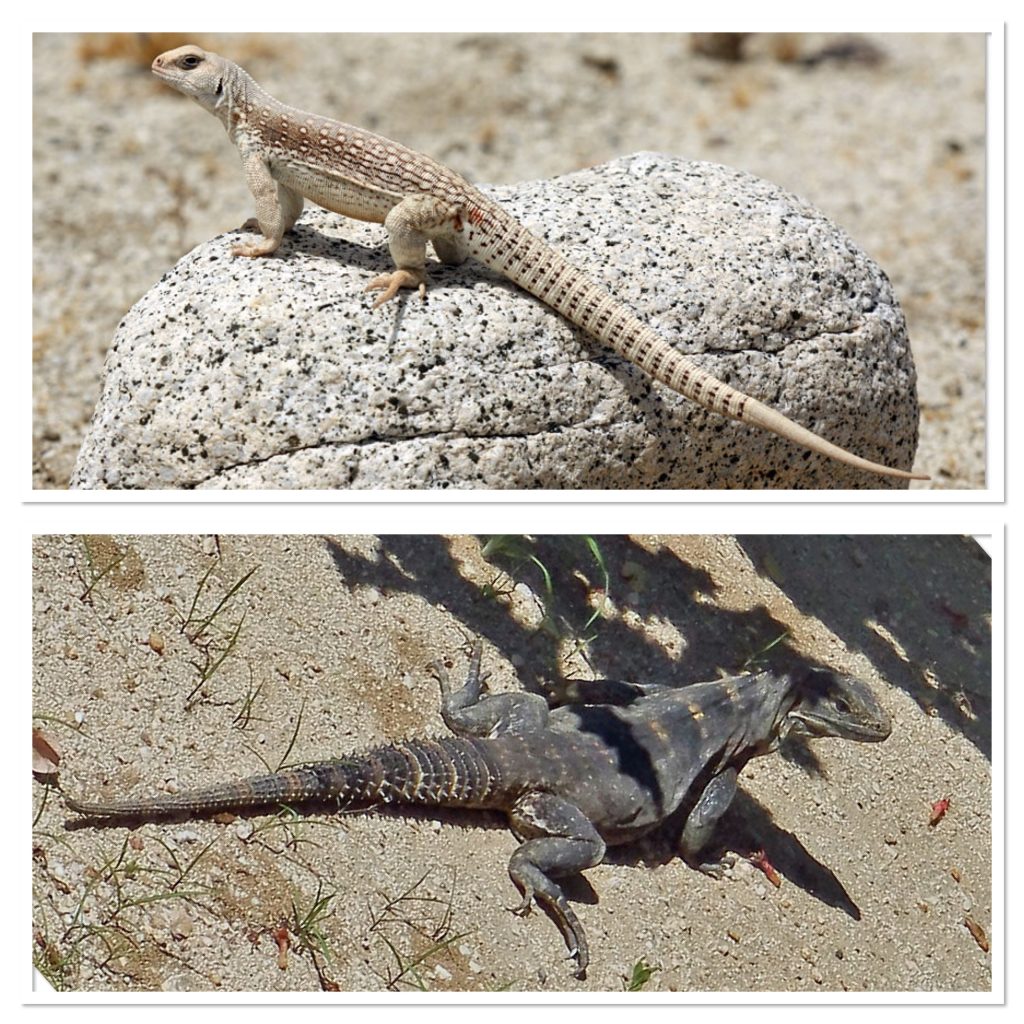
Here in La Ventana/El Sargento, we have two species of iguana. I have been getting a lot of questions about them recently, so I decided it is time for another column spotlighting our largest lizards.
The first species is the Cape Spiny-Tailed Iguana (Ctenosaura hemilopha), which is a beautiful, arboreal (lives in trees or, in our case, cactuses) iguana that frequently invites itself into people’s yards. Before they know it, they have a new resident living on one of their Cardon cactuses or on their rooftop. The good news is that these Iguanas are always quite respectful; they just want to eat leaves, flowers and insects, and lie in the sun for hours on end.
Cape Spiny-Tailed Iguanas come in a few colors. Large adults will usually be black with a gray collar, but young adults will range from olive green to gray. In my opinion, the babies are the prettiest, pulling off a striking bright green for their first year or so.
The second species of local iguana is highly seasonal, and almost impossible to spot from December to March. Desert Iguanas (Dipsosaurus dorsalis) spend their winters underground, in extensive tunnel systems. These lizards do not climb trees; they prefer life on the ground. They are most often a sandy brown color, although sometimes they will appear much darker depending on the weather. They are a bit smaller than the other local iguana species. If you are here in June, you will see these lizards flash by at regular intervals. I would say they are the most common lizard in our area through the summer months. They are also ridiculously fast and quite skittish, so trying to get a good look at one can be like trying to examine a bolt of lightning.
Throughout the fall, these iguanas exhibit an interesting behavior: many individuals will disappear, even though it is warm enough for these heat-loving reptiles. The adult iguanas move underground temporarily, which allows the young iguanas a window of opportunity. Since many of the adults are not around, the young ones get to eat more of the flowers, which in turn allows them to grow much bigger then they normally would when competing with adults for food. And being bigger and stronger gives them a much better shot at making it through the winter.